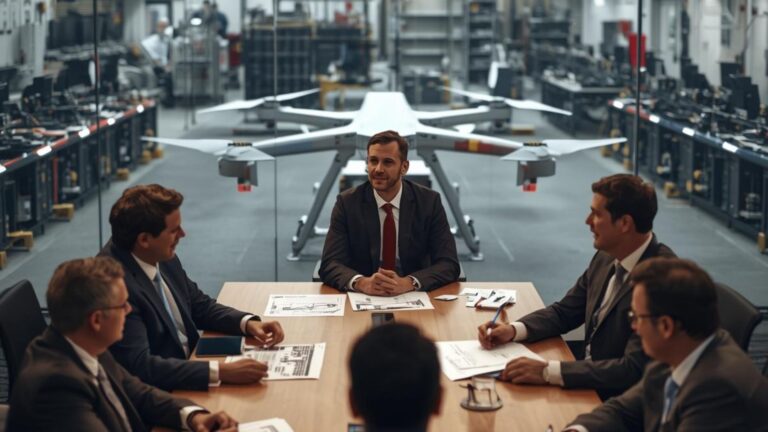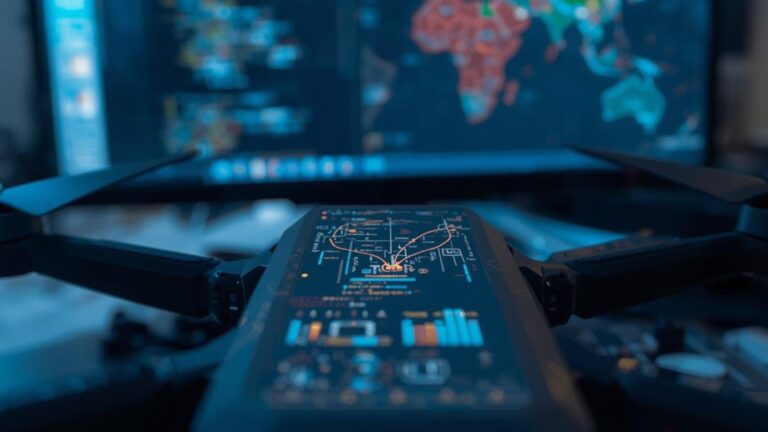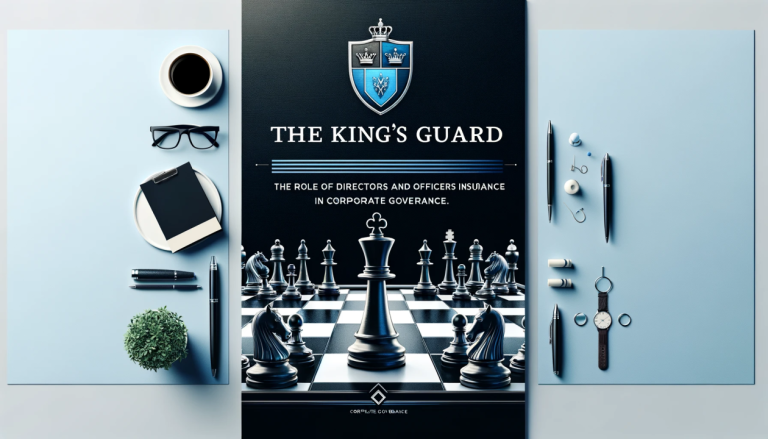Directors & Officers (D&O) Insurance
D&O insurance protects a company’s leaders (directors, officers, and often key managers) against personal liability for claims alleging they made bad decisions or mismanaged the company. It covers wrongful acts in the management of the business. The claims covered by D&O are typically things like breach of fiduciary duty, negligence in oversight, misrepresentation, or other errors in governing the organization.
The policy pays for legal defense costs, settlements, or judgments if those individuals are sued. For example, if a board of directors is sued by shareholders for making an ill-fated acquisition that tanked the company’s value, a D&O policy would cover the board members in that lawsuit. In short, D&O = management liability protection – it’s focused on the decisions and actions of people at the top of the company.
Errors & Omissions (E&O) Insurance
E&O insurance, on the other hand, protects a business (and its employees) against claims of mistakes or failures in the professional services or products the business provided. It’s often called Professional Liability insurance because it covers errors, omissions, or negligence in the performance of one’s professional duties that cause financial harm to a client or customer.
For instance, if a software company’s product fails and causes major downtime for a client, the client might sue the company for damages. That would be an E&O claim. Or if a consulting firm gives faulty advice that leads to a client losing money, the client can sue for professional negligence – again covered by E&O. Think of E&O as coverage for “the work you do for others”. It doesn’t cover management decisions, but rather the execution of your professional services or obligations.
In essence, the key difference is that D&O covers internal management decisions affecting the company and its stakeholders, whereas E&O covers external obligations – your company’s output or services affecting your customers. One easy way to remember: D&O = “Directors & Officers” (protects the people running the company from lawsuits about how they ran it), E&O = “Errors & Omissions” (protects the company when there are mistakes in the work delivered). Another phrasing used in the industry is that D&O covers “wrongful acts in managing the company” and E&O covers “professional errors in servicing clients.”
It’s worth noting that some scenarios might involve both D&O and E&O aspects. For example, imagine a scenario with a small financial advisory firm: the firm’s financial advice to a client (professional service) is incorrect, leading to client losses – that’s clearly an E&O issue. But say the client also alleges that the CEO (as a director) knew the advice was bad or failed to properly supervise the advisory process – that could bring the CEO’s management into question, potentially triggering D&O coverage. In practice, the two policies work complementarily: E&O handles the direct service-related claim, D&O handles any management negligence claims. Insurance companies sometimes offer combined packages to ensure no gaps between D&O and E&O for such situations, especially for smaller firms.
What about other liability policies?
D&O and E&O are part of a broader category often referred to as management and professional liability. Other key policies in this realm include:
- Employment Practices Liability Insurance (EPLI): This covers claims related to employment matters, such as employee allegations of discrimination, sexual harassment, wrongful termination, hostile work environment, and so forth. EPLI is important because those types of lawsuits are quite common. While a D&O policy might cover an executive named personally in an employment lawsuit, many D&O policies exclude or limit coverage for employment-related claims, expecting a company to have a separate EPLI policy. For example, if a group of employees sue the company and the CEO for discrimination, the EPLI policy would defend both the company and the CEO (and the D&O might only step in if needed or in excess). Companies typically carry EPLI alongside D&O to ensure complete coverage for their management.
- Fiduciary Liability Insurance: This is a more specialized coverage that protects the fiduciaries of employee benefit plans (like 401(k) retirement plans or healthcare plans) from claims that they mismanaged those plans. For instance, if a company’s retirement plan administrators (which could include officers or HR directors) are sued by employees for putting the 401(k) funds in imprudent investments, fiduciary liability insurance would cover that. Many standard D&O policies do not cover ERISA-related claims (ERISA is the law governing retirement plans in the US), so a separate fiduciary policy is purchased. This is relevant to management liability because often the same directors or officers could be fiduciaries of benefit plans.
- Commercial General Liability (CGL): This is not a management/professional liability policy, but rather a basic business liability policy that covers bodily injury or property damage to third parties. For example, if a customer slips and falls on your premises or if your product physically injures someone or damages their property, CGL responds. We mention it here because sometimes people confuse general liability with D&O or E&O. General Liability does NOT cover the types of claims D&O and E&O cover. CGL won’t help if you’re sued for a bad business decision or for negligence in providing professional services – those are exactly what D&O and E&O are for. So businesses need to understand that general liability is one piece of the puzzle (physical risks), and D&O/E&O are another (financial and management risks).
- Cyber Liability Insurance: With the rise of cyber threats, many companies also carry cyber insurance which covers things like data breaches, cyber attacks, and the associated costs (notification, credit monitoring, legal defense against privacy lawsuits, etc.). While cyber insurance is separate, it’s worth noting because a cyber incident can lead to D&O claims as well (shareholders might sue executives after a severe data breach, claiming they failed to ensure proper security – that would be a D&O matter). So, having both cyber coverage and D&O coverage ensures you’re covered both for responding to the breach itself (cyber policy) and any shareholder or regulatory fallout blaming leadership (D&O policy).
- Professional Liability vs. D&O for certain professions: In some fields, the line can blur. For instance, a medical practice might have a Medical Malpractice policy (which is a form of E&O for doctors) and also a D&O policy for the clinic’s board. Or a law firm might have Legal Malpractice insurance (their E&O) and a D&O policy for the partners managing the firm. Each policy covers different aspects – malpractice covers negligence in professional duties to clients, D&O covers disputes among partners or claims of mismanaging the firm. Businesses should evaluate all angles of liability: who could sue us and for what? Then ensure the appropriate policies are in place.
Why not just one policy?
Because the universe of potential lawsuits is so varied, insurance has evolved into these distinct products. D&O and E&O are designed not to overlap too much and also to avoid gaps. One big difference is who is covered: D&O specifically covers the people in management positions (and often the company itself as an entity for certain claims), whereas E&O typically covers the company and any employee who did the work in question.
Another difference is what the trigger is: D&O is triggered by acts in managing the company, E&O by acts in delivering the service or product. Having separate policies allows insurers to specialize and price according to those specific risks.
A well-run company will have a suite of liability insurance coverages to address different threats. D&O insurance will protect the decision-makers from lawsuits about how they ran the business. E&O insurance will protect the business if there are mistakes in the professional services or products provided.
EPLI will cover employee-related claims, fiduciary covers benefit plan duties, cyber covers data breaches, and general liability covers physical risks. Each addresses a distinct category of risk. By understanding D&O vs E&O and these other policies, companies can ensure they aren’t caught off guard by a liability that falls into a gap between coverages.
For most organizations, especially those offering services or operating in litigious industries, both D&O and E&O are essential – they complement each other. A good insurance broker or risk manager will help tailor a program that includes all necessary policies in the right amounts. This way, whether the lawsuit comes from a client, an employee, a shareholder, or a regulator, the company has the right insurance in place to handle it. In the end, the goal is comprehensive protection: safeguarding the company’s finances and its leaders’ personal assets, no matter what kind of claim arises.



















































































































